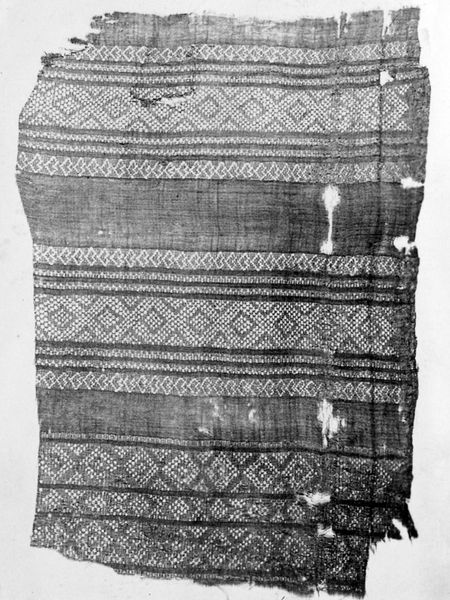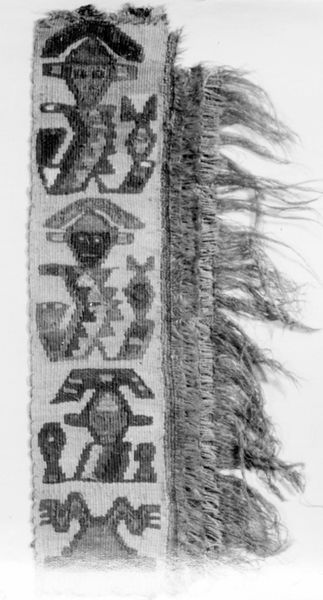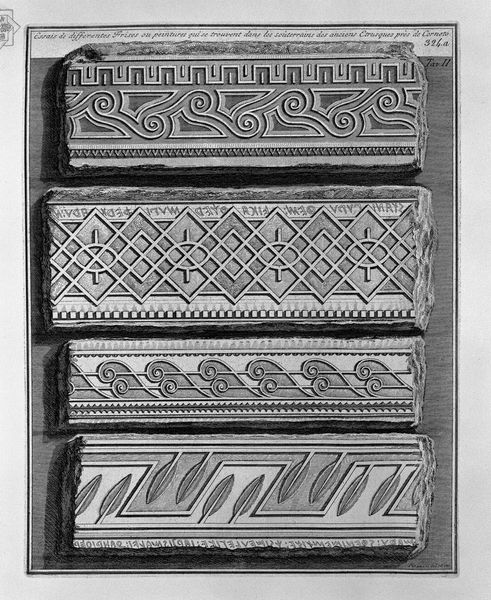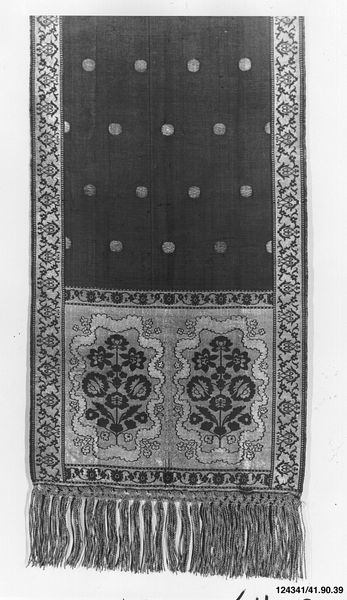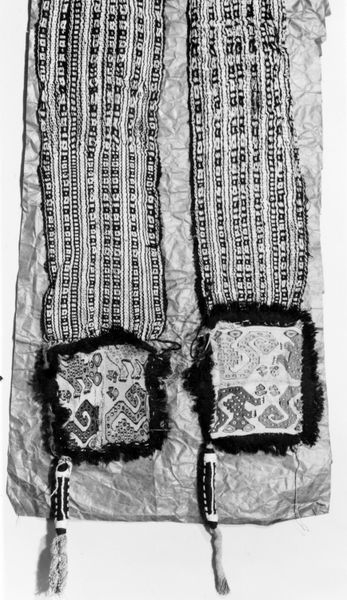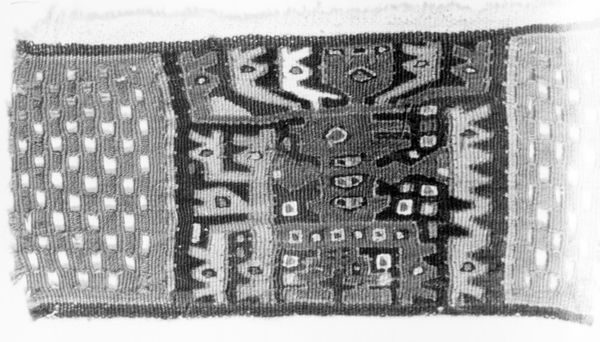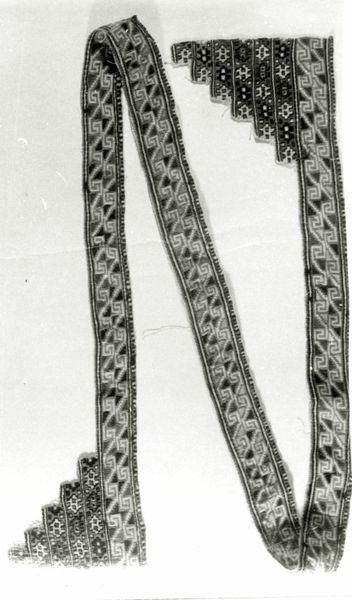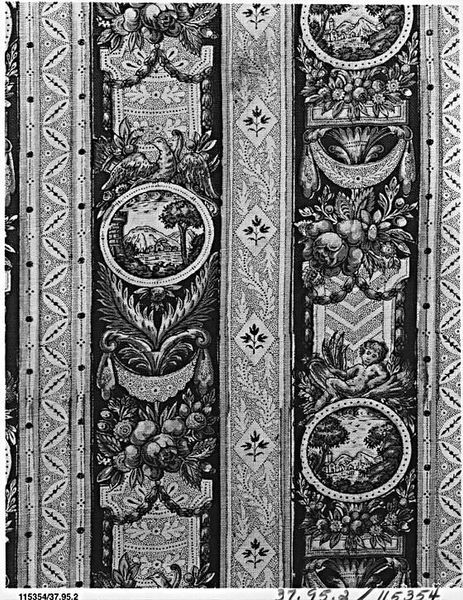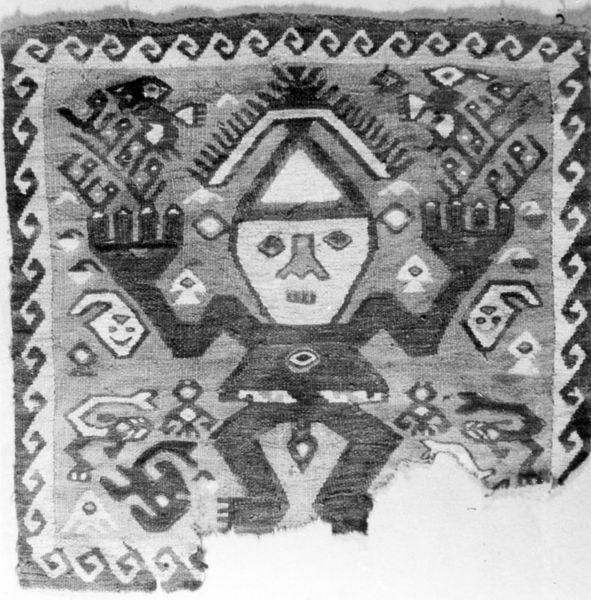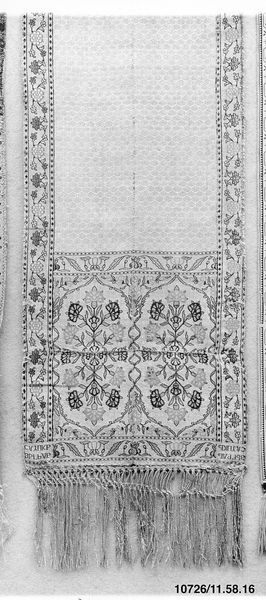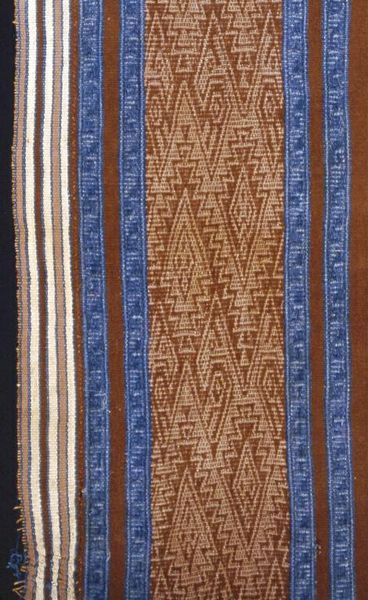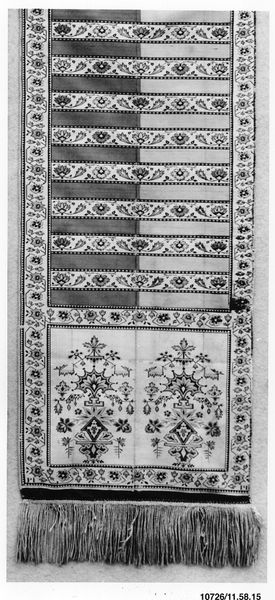
fibre-art, weaving, textile
#
fibre-art
#
sculpture
#
weaving
#
textile
#
geometric
#
indigenous-americas
Dimensions: a: 25.4 × 4.5 cm (10 × 1 3/4 in.) b: 29.2 × 5.1 cm (11 1/2 × 2 in.)
Copyright: Public Domain
These fragments of a loincloth were woven in Peru by the Chancay people, using fibers from the cotton and camelid family. Weaving was extremely important in Andean cultures. These textiles were more than just functional items of dress, as they were deeply embedded in social life. The geometric patterns you see here were achieved using a technique called tapestry, which involves carefully inserting different weft threads to create the desired design. It’s painstaking work, demanding a high degree of skill and focus. The very act of weaving carried cultural significance. It provided a means of representing ideas and beliefs through the specific choices of materials, colors, and motifs. When we consider the time and skill it would have taken to produce this loincloth, we can get a glimpse into the values placed on labor, artistry, and community identity. This challenges our usual assumptions about the divide between art and craft.
Comments
No comments
Be the first to comment and join the conversation on the ultimate creative platform.
